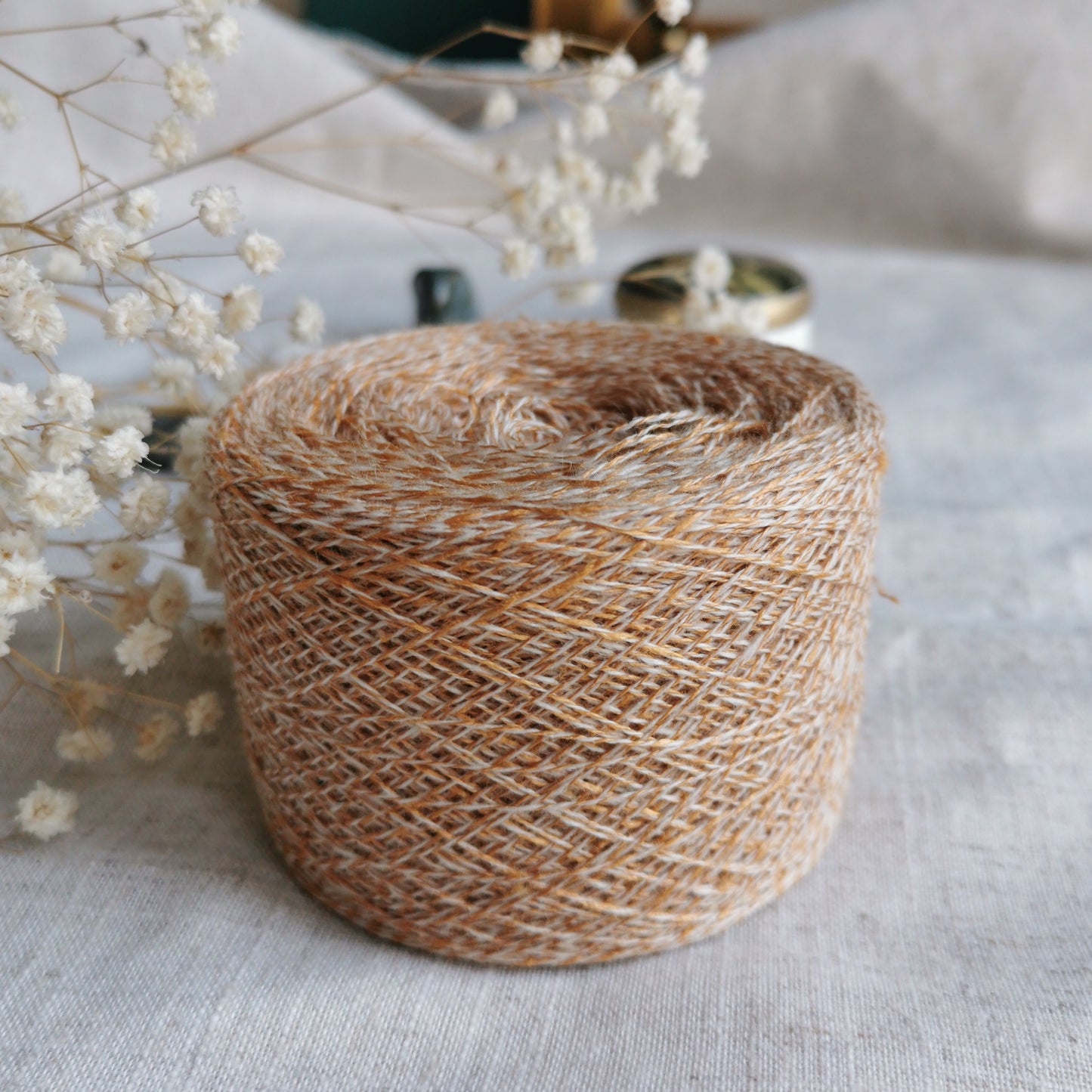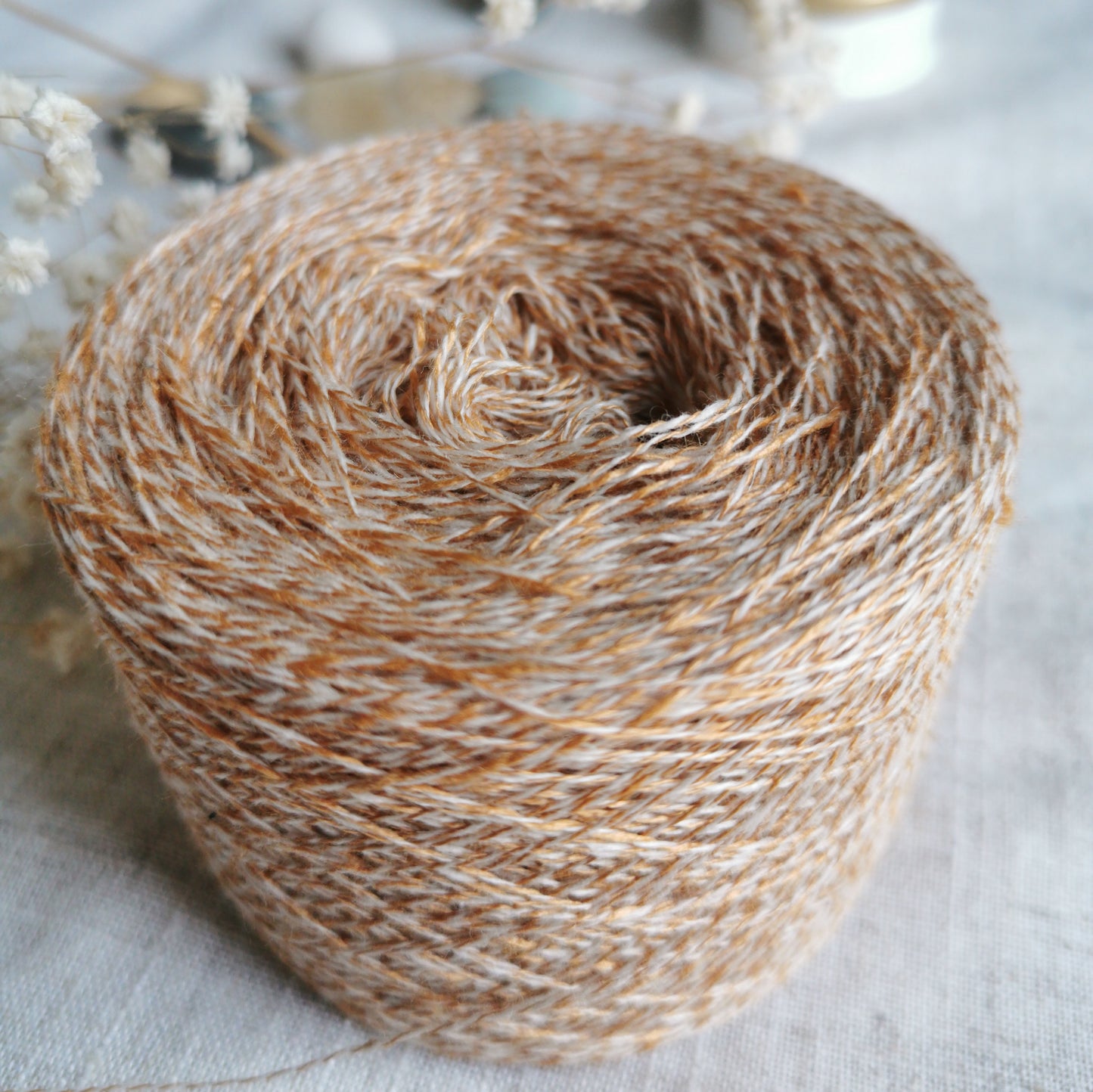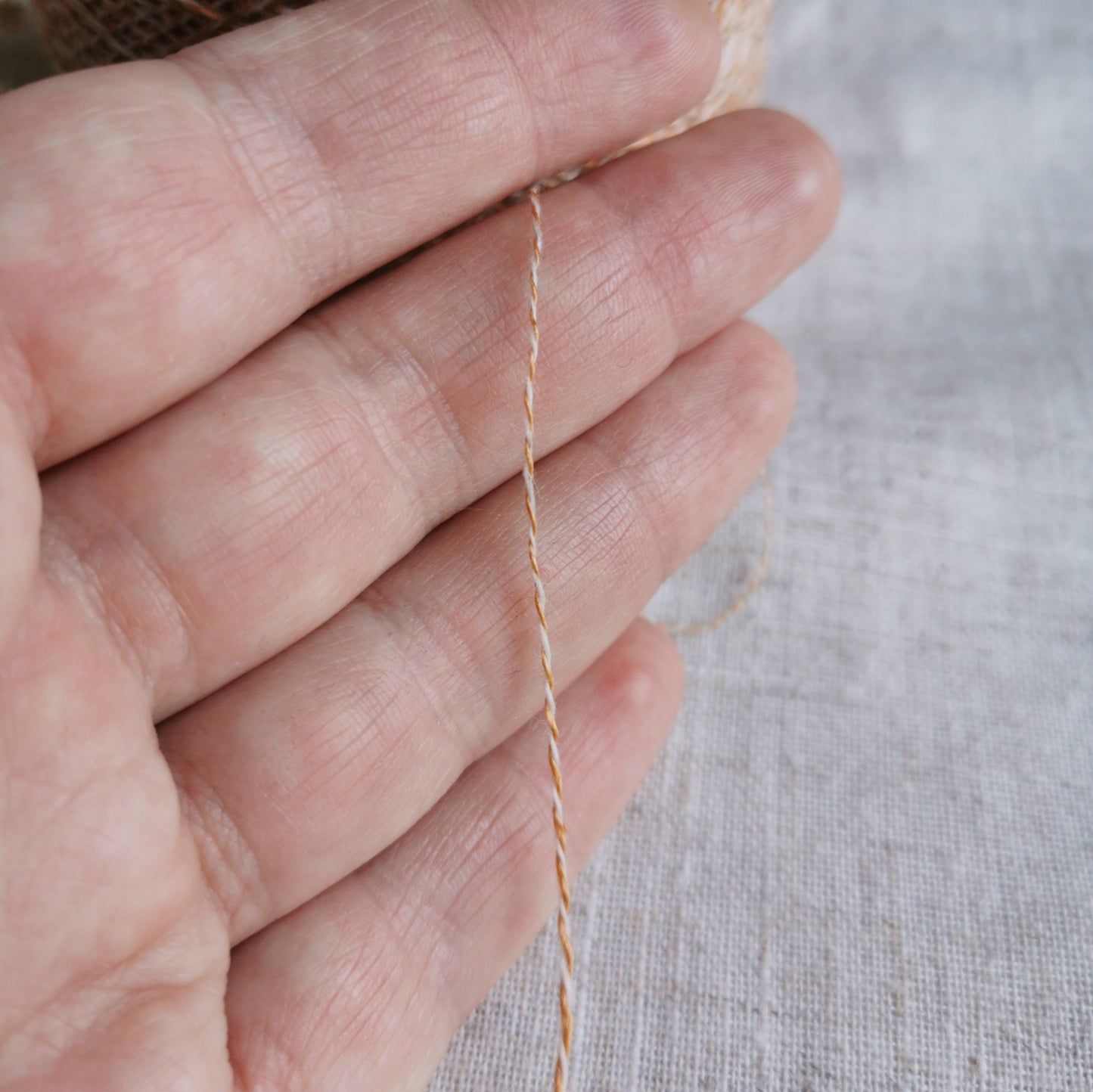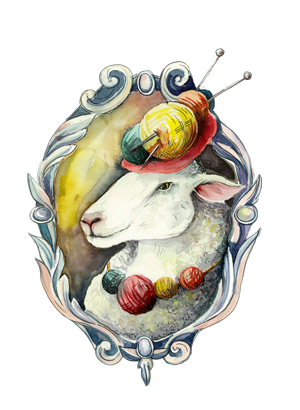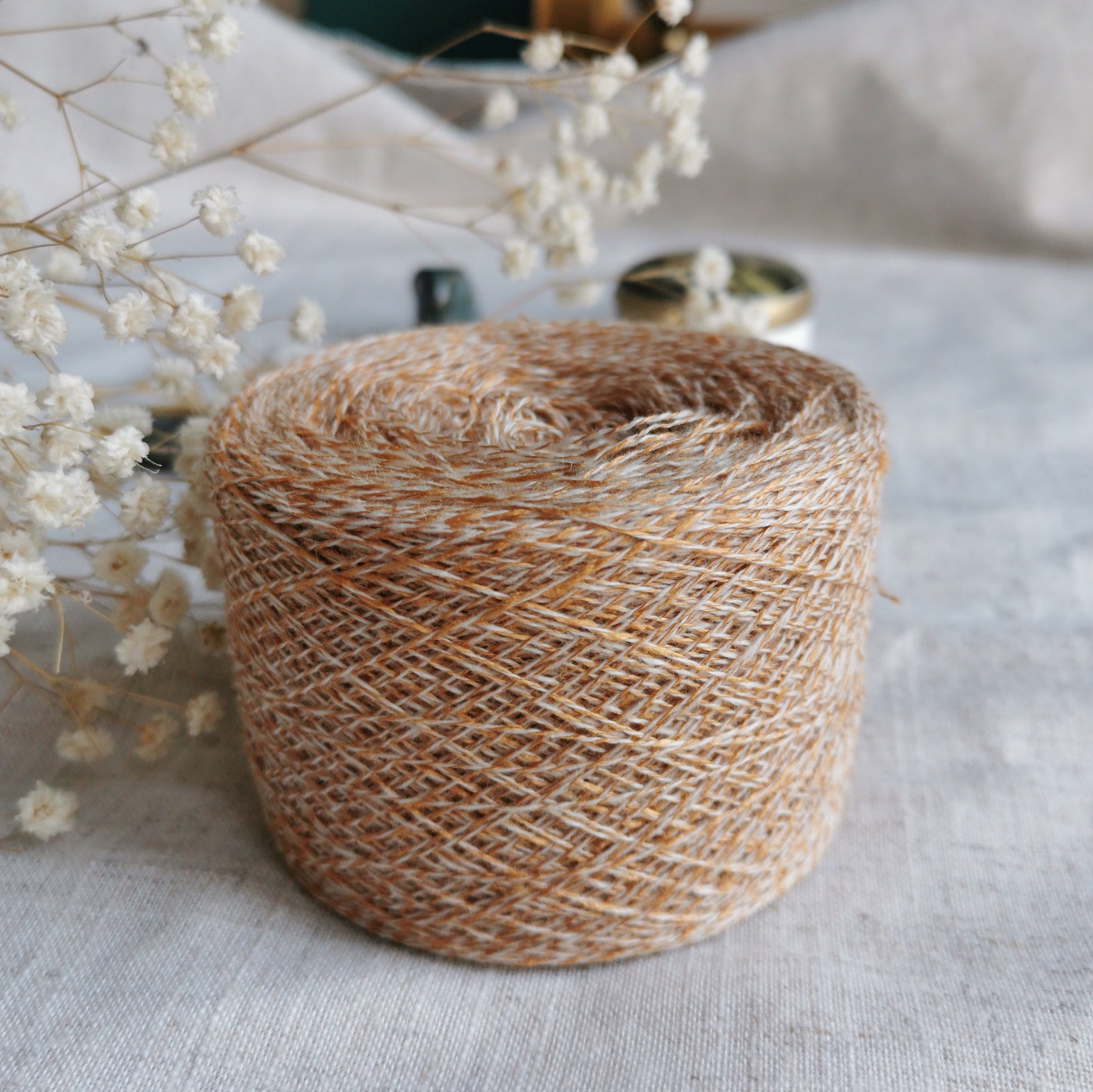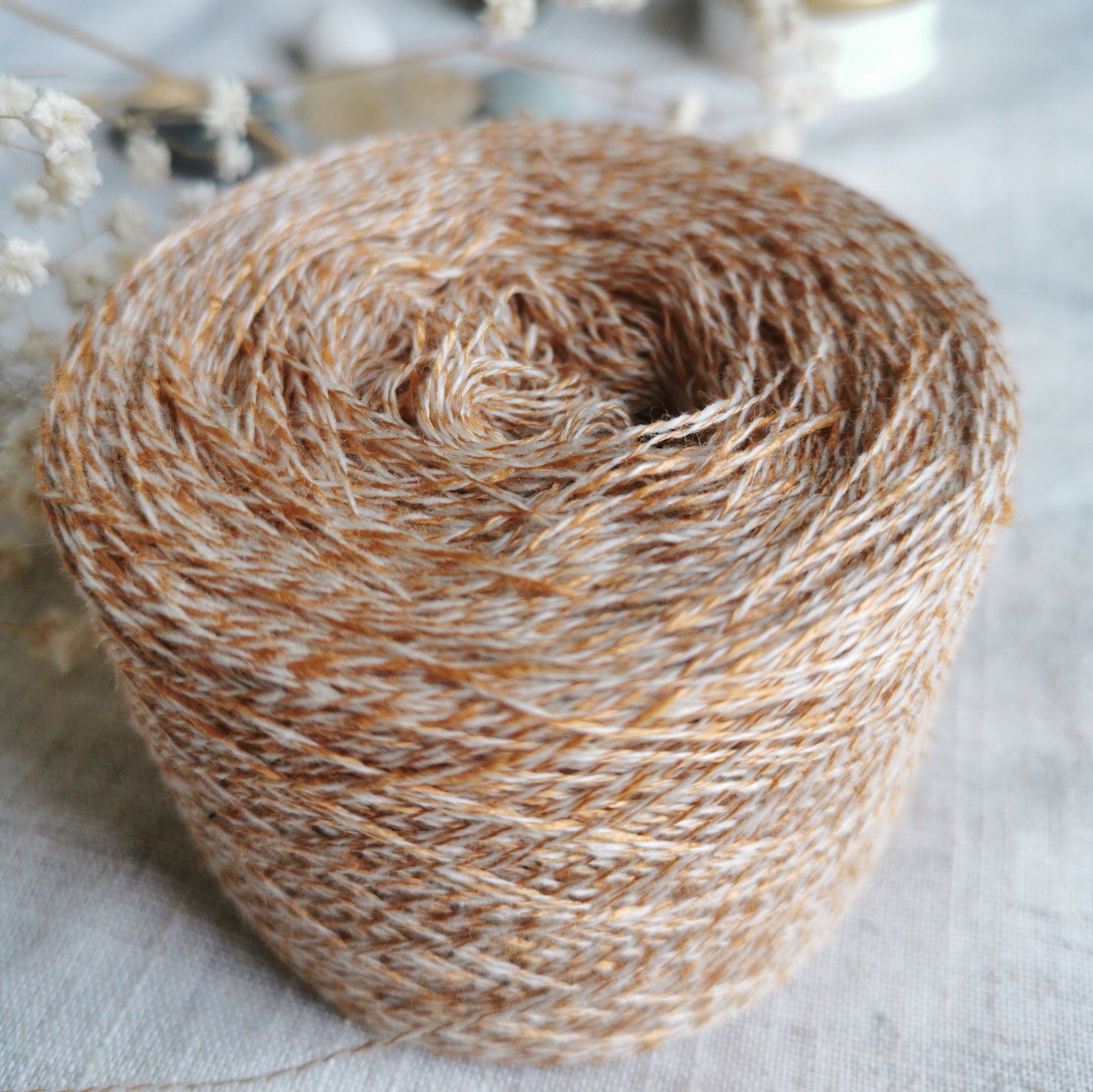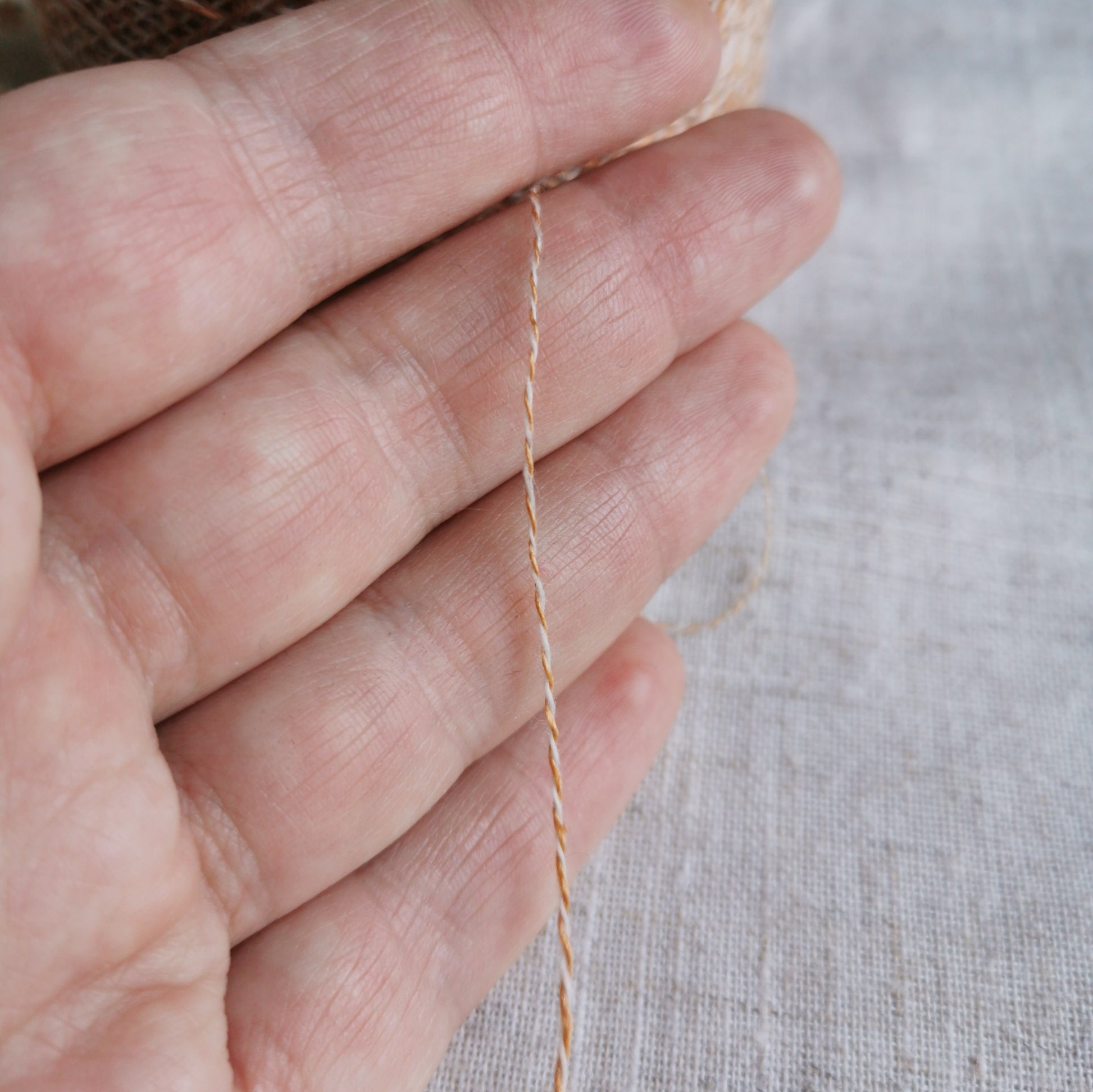Finest Yarns
Cashmere/Eri Yarn 50g
Couldn't load pickup availability
A fine slubby shantung effect yarn, made with a natural coloured ‘red eri’ silk from silkworms fed on Ficus Citrifolia leaf, twisted with undyed cashmere.
52% Undyed Cashmere / 48% Red Eri Silk (Undyed)
725 m / 50g
362 m / 50g (if you knit with two threads held together)
242 m / 50g (if you knit with three threads held together)
Needle size: 3.00 mm if you knit with two threads
3.50 mm if you knit with three threads
Hand wash and dry flat
While all the effort has been made to show colours as true to life as possible, actual colour might differ slightly due to differences in device monitor adjustments.
Cruelty-free, Eri Silk is derived from the cocoon of the Eri silkworm which, unlike its Mulberry cousin, builds its cocoon with several shorter threads. This makes killing it unnecessary since the cocoon can be harvested once empty with no damage to the threads’ natural quality.
It’s a short-staple fibre, Eri Silk cannot be reeled into raw filament yarn, and therefore must be spun like wool.
Because the Eri silkworm eats a wider variety of leaves compared to its Mulberry cousin (who feeds exclusively on Mulberry leaves), the production of Eri Silk supports a circular economy where waste is minimised. The farming and cultural processes bring advantages to the community beyond the sole production of yarn.
Castor (Eri in the local language), the primary source of food for this silkworm, can also be used for natural oil production and food. Cassava and tapioca, which also feed the silkworm, are also part of the indigenous diet and food market.
Such flexibility allows the locals to farm Eri silkworms in harmony with the varied native flora which already supports their livelihood, instead of succumbing to soil-depleting single-crops that, while boosting the region’s economy, on the one hand, cripple its autonomy and self-sufficiency on the other.
Eri silk matches the luxurious aesthetics of spun silk, which is more opaque and textured than your traditional glossy silk and which we love for its muted and elevated elegance.
It is also irresistibly soft, with a tendency to get softer with every use. Finally, in its fibre it packs great hypoallergenic and thermo-regulating properties, making it the ideal companion throughout the seasons even for the most delicate skins.
Share
